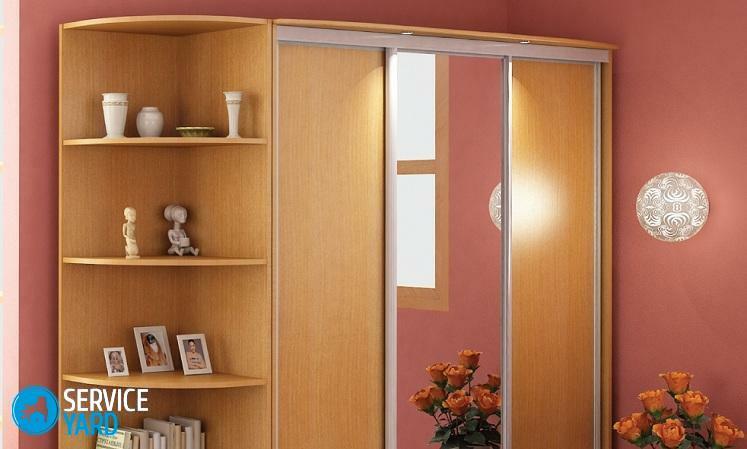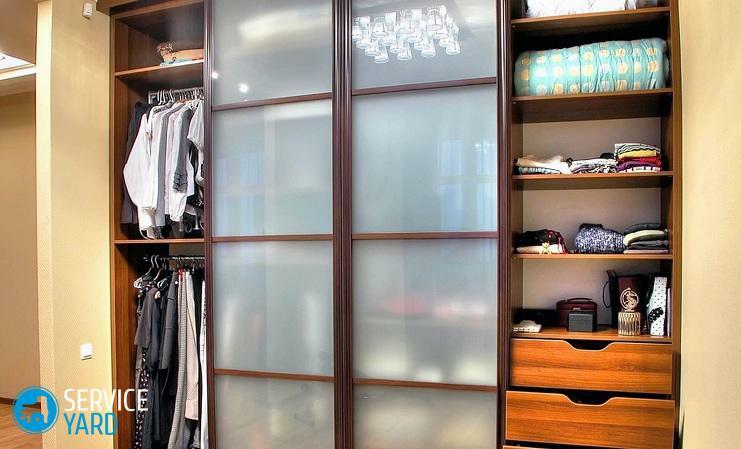
- Features of dismantling of old cabinets with your own hands?
- General scheme of disassembling furniture
- How can I independently disassemble a wardrobe?
No piece of furniture can stand in one place for several decades in a row, because someone often has to move, while others just get tired of the usual situation and want to make some adjustments. Naturally, small pieces of furniture, such as pots, chairs, coffee table, can be manually moved, but when it comes to larger interior details, as a rule, problems arise. Cabinets, for example, must be completely disassembled, so as not to damage them during transportation, do not loosen the mechanisms. Of course, you can just wrap the furniture around with a rope and try to move or transport it in assembled form, but why risk it? But it also happens that furniture is simply impossible to take out of the room because of the large size. So now we'll figure out how to dismantle the cabinet yourself, so that everyone remains intact - both you and he.
to the contents ↑Features of the dismantling of old cabinets with your own hands?
For many years, wardrobes are in great demand due to the variety of colors, good capacity. During the repair or relocation it is necessary to completely disassemble such furniture, because it has many important functional parts and systems, the breakdown of which can not be tolerated, otherwise it will stop working as it should.
Therefore it is important to understand how to disassemble the old cabinet correctly, to study the features of the structure, disassembly of all elements. The features of consecutive disassembly of the sliding-door wardrobes look like this:
- If you plan and disassemble and assemble the product yourself, then it's better to write down all the work in stages. This will allow you to save time and achieve the desired result. All parts are recommended to be packaged separately, so as not to damage anything.
- Before you start, you need to empty the cabinet of all things, get out drawers.
- Then there is a stage of dismantling the doors. It is advisable that someone help you in this, otherwise - you risk damaging the details. To remove the movable roller from the grooves, you must first open the door slightly, and then slightly raise it.
- At the next stage, you can pull out drawers, shelves that previously could not be gotten from behind the door.
- The lamps are then disconnected from the wires, because most models have a backlight.
- The next step is to work with the guide elements. Do this slowly, carefully, because they can easily be damaged.
- The dismantling of the body begins with the rear wall. It is better to use some suitable tools so as not to break the fasteners. Minor details must be recalculated, laid out on packages.
- If the doors have mirrors, you need to take care of their integrity and safety in the process of moving and transporting over long distances.
The main thing is to do all the work slowly, allocate more time to it so as not to accidentally damage the components, as a result of which the functionality of the whole cabinet may be violated. In particular, it concerns expensive, exclusive models that are not only expensive, but also equipped with special fasteners and details.
Important! When planning the transportation of such a cabinet, take care of an appropriate transport in advance in order to preserve its original appearance.
to the contents ↑General scheme of disassembling furniture
To understand how to dismantle the cabinet and then to assemble it correctly, you need to have minimal knowledge and skills. Remember that different manufacturers use completely different fasteners, fittings and parts for connecting partitions and shelves to each other, installation of sliding and swinging facades. All of them have their own peculiarities, and if you take them into consideration, you will not take much time to assemble and disassemble.
The general technique of disassembling any furniture looks like this.
Removing facades:
- It is quite easy to remove hinged doors that are hinged. Use a screwdriver to loosen the screws on each side of the side panel. Then the facade can be easily removed.
- Lower bearing doors can be removed even easier. You need to raise them, before opening the locks on the wheels from the bottom, and move the door down and onto yourself, and then pull out the upper rollers from the upper guide.
- Suspended doors are more difficult to install, as they can be suspended from railings that are above the roof or under the roof.
- The lower rollers can be placed under or above the floor sheet. All of them are differently understood, but the principle is used one: first the door is raised, from above on the side of the support roller it is removed from the guide, then it is removed from the bottom with the supporting bar, and for this it is necessary to pull a little down and on yourself.
Rear wall:
- If the back wall to the partitions of the cabinet and the ends of the shelves is attached with nails, it is necessary to remove it first, because the partitions and shelves sit tightly on it.
- If it is fixed in the grooves of the side walls, the floor and the roof of the cabinet, then it will need to be removed last, after the frame has been disassembled.

Remove the shelves
Next, the shelves, located horizontally between the side walls and partitions, are removed. Moreover, they can be attached to different hardware. For example:
- Parts assembled with eccentrics should be dismantled using a cross-head screwdriver right under the shelf clockwise. And the shelf is removed by shifting up.
- In the case of using screws of the European version, it is necessary first to unscrew the screws with hexagon from the end of the shelf, and then do the same on the side.
- If the furniture is assembled at the corners, you should first open the covers of plastic parts, and then unscrew the screws.
We remove the partitions
Now we dismantle the partitions and sidewalls on the same principle as the shelves.
Standard furniture is easy to disassemble - everything is clear on an intuitive level even for beginners. By the way, built-in furniture can be dismantled independently, because most often it is collected with the help of corners, which are easy to understand.
to the contents ↑How can I independently disassemble the closet?
What is the difference between a wardrobe and a standard model with a swing door? Naturally, the dimensions and features of the structure and operation of the doors. Therefore, before deconstructing the old cabinet, you need to study in detail every stage of the disassembly.
Important! Sliding system allows even a person with small growth to take advantage of all the advantages of modern furniture. With its help you can store things almost under the ceiling and easily get them. The dismantling of such cabinets is based on the correct disassembly of the door and component parts, since the frame itself is very easy to disassemble.
Completion of any cabinet-compartment looks like this:
- Cloth. Collect it, as a rule, from the filler and profiles. They can differ in height, because moving rollers are installed in the lower rail, and in size they are much larger. The lateral profiles are rather thick, because they form them in the form of handles.
Important! The grooves located in them are capable of holding sheets 10 mm thick.
- System Mechanisms. The complete set of sliding-door wardrobes presupposes the presence of lower and upper rollers, adjusting screws, self-tapping screws. Also, during installation, they are equipped with stoppers or door closers, which ensure smooth sliding of the leaflets and their retention in the closed state.

Step-by-step dismantling of the door of the sliding-door wardrobe is to remove each mechanism and the parts separately:
- Closers. As a rule, they are used in premium models to achieve a smooth ride and to protect the leaf from sudden movements. To remove the door closer, you need to unscrew it, but do not hurry to detach from the canvas. Better - leave it on the box, in order to facilitate its assembly in a new place.
- Locks or locks. These elements ensure the closest fit to the walls of the cabinet flaps. If the stoppers are installed, then during the closing you can feel a little effort. Therefore, in case of their presence, it is necessary to do the disassembly. Using a screwdriver, unscrew the bolts that secure them, detach the stoppers.
- The guides in most models are mounted on the frame, so when closing the doors, they do not rest against the side walls, but stop with side stops. In this case, you need to remove the limiters and roll out the rail from the rail.
- The lower rollers, as a rule, are provided with special fixatives, which block attempts to remove the web. To open the door freely, you need to rotate the flag on the lower rail by 90 degrees, and the lock is eliminated, and the canvas leaves the grooves simply and easily.
- It is also necessary to remove all fasteners found.
- The sash can be raised with a screwdriver.
- If it is not possible to remove the leaf from the upper guide, it is necessary to unscrew both the upper and lower guides. This will ensure their safety during transportation.
- Take the doors one at a time.
It is recommended to follow the instructions clearly, where the detailed description of how to disassemble the cabinet is described in detail. Remember, the more carefully you do the disassembly of the cabinet, the easier it will be to re-assemble it in a new place.



